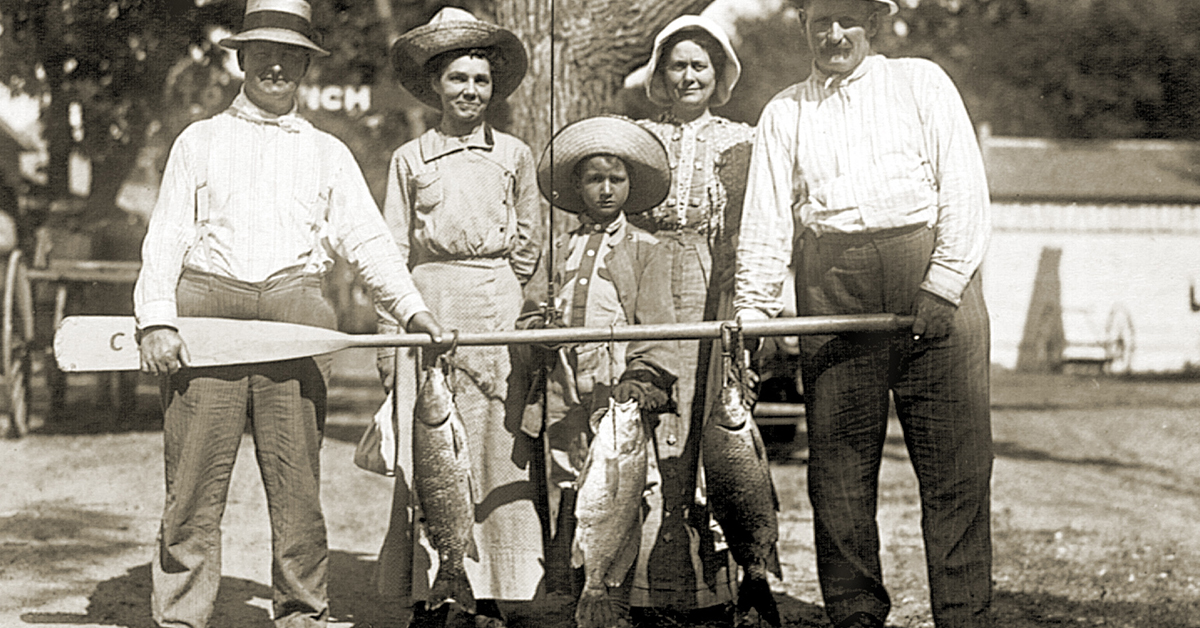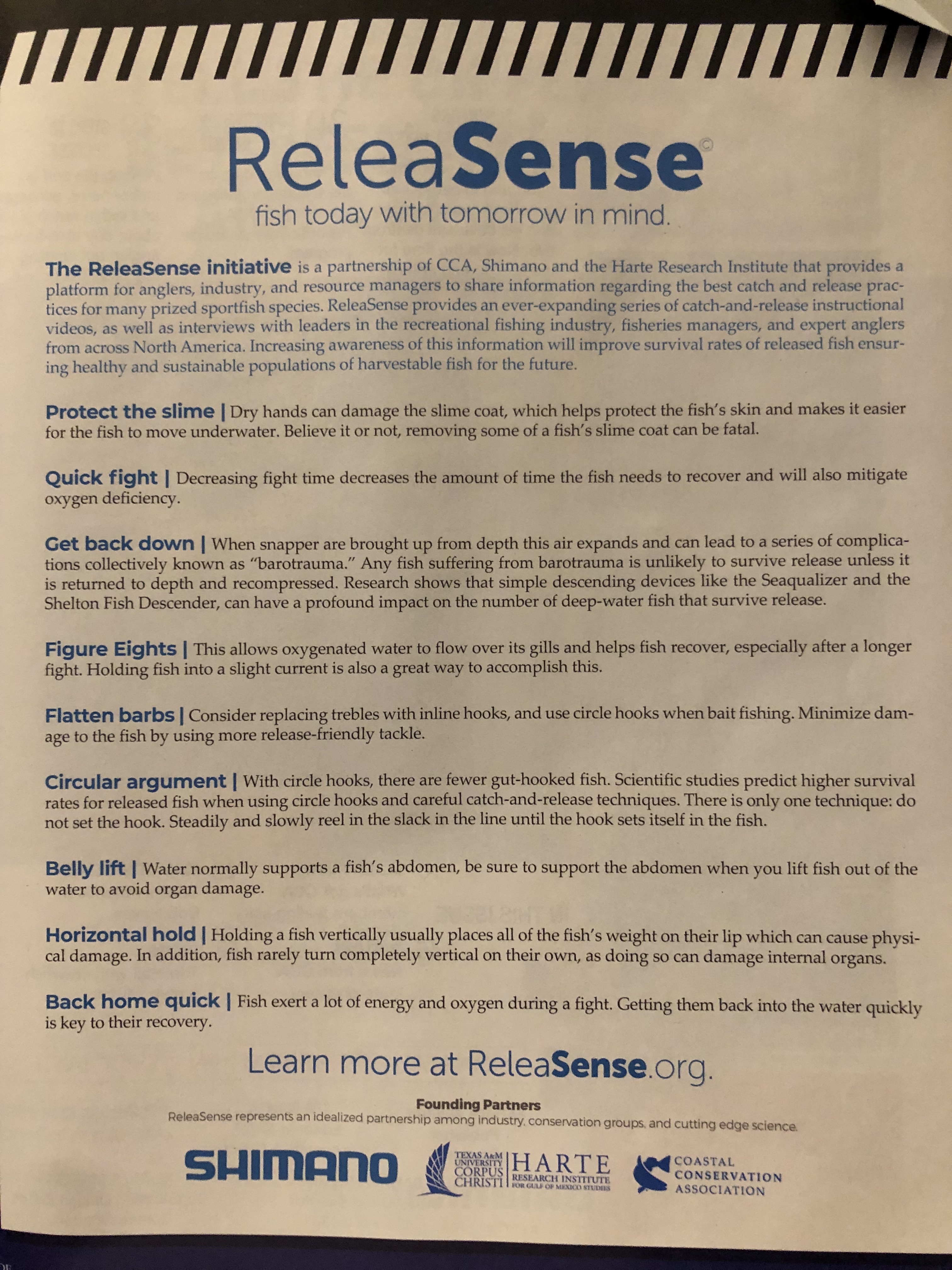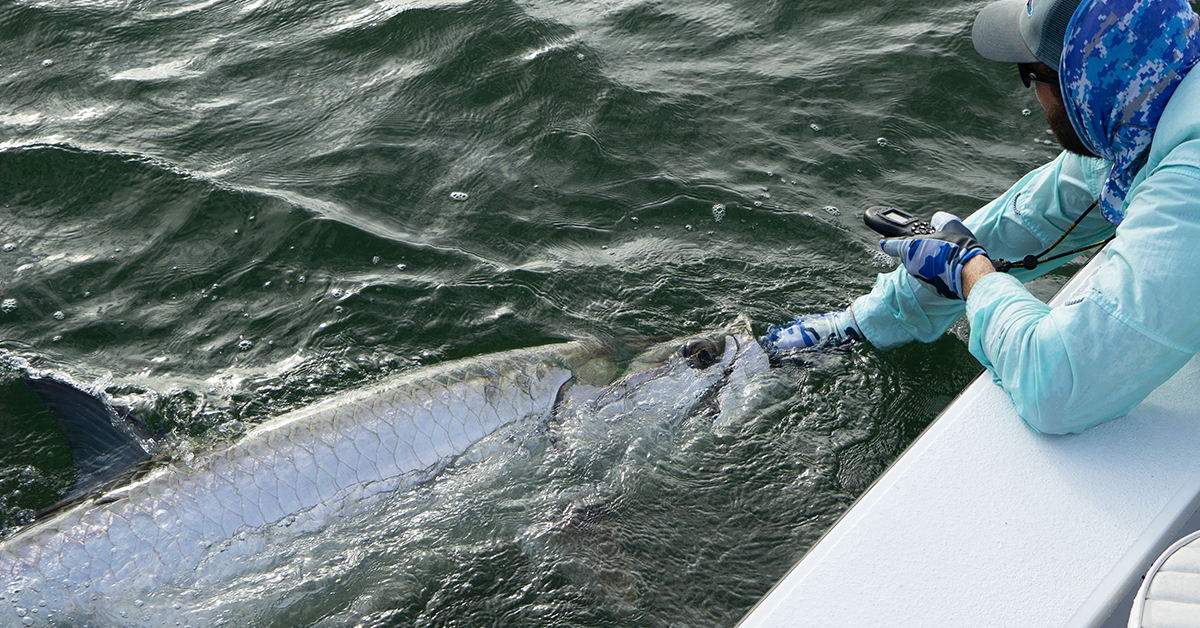Catch & Release Tactics (So You Can Catch More Trophy Fish)
- By: Joseph Simonds
- on
- Found In: Conservation, Fishing Tips, Inshore Fishing, Offshore Fishing

Think back to the biggest fish you ever caught…
Maybe it was a bull red…
Or a 20-pound grouper…
Or a 40-inch snook…
Remember the bend in the rod?
And how hard she pulled?
And how you couldn’t believe it when you finally got her to the boat?
Now, how would you like to do it again?
Heck yeah!
That would be awesome!
But here’s the thing: unless you safely released her, you’re hurting your chances of catching another trophy fish.
The thing about trophies is that they’re limited, and every time anglers catch and kill (intentionally or unintentionally) a trophy fish, they’re decreasing the population of them.
Of course, that’s one less big fish out there today, but potentially thousands of their babies out there in a few years.
And this doesn’t just go for the trophies…
Every fish you catch that you don’t plan on keeping should be safely released.
So how do you do that?
Well, I stumbled upon these catch and release tips from ReleaSense.org.
ReleaSense is an organization dedicated to sharing best practices and research about the safest way to release fish so that they can survive and thrive after you catch them.
I just had to share them here with you guys, so that we’re all practicing safe catch and release for the good of our fisheries.
You can see the tips in the image below, but just in case the image is too small or tough to read on your phone or computer, I’ve written them out for you.
Check them out and be sure to share this article with your fishing buddies so that we can all have more fish for tomorrow.
Catch & Release Tips

Protect The Slime
Dry hands can damage the slime coat, which helps protest the fish’s skin and makes it easier for the fish to move underwater.
Believe it or not, removing some of a fish’s slime coat can be fatal.
Quick Fight
Decreasing fight time decreases the amount of time the fish needs to recover and will also mitigate oxygen deficiency.
Get Back Down
When snapper are brought up from depth this air expands and can lead to a series of complications collectively known as “barotrauma.”
Any fish suffering from barotrauma is unlikely to survive release unless it is returned to depth and recompressed.
Research shows that simple descending devices like the Seaqualizer and the Shelton Fish Descender, can have a profound impact on the number of deep-water fish that survive release.
Figure Eights
This allows oxygenated water to flow over its gills and helps fish recover, especially after a longer fight.
Holding fish into a slight current is also a great way to accomplish this.
Flatten Barbs
Consider replacing trebles with inline hooks, and use circle hooks when bait fishing.
Minimize damage to the fish by using more release-friendly tackle.
Circular Argument
With circle hooks, there are fewer gut-hooked fish.
Scientific studies predict higher survival rates for released fish when using circle hooks and careful catch-and-release techniques.
There is only one technique: do not set the hook.
Steadily and slowly reel in the slack in the line until the hook sets itself in the fish.
Belly Lift
Water normally supports a fish’s abdomen, be sure to support the abdomen when you lift fish out of the water to avoid organ damage.
Horizontal Hold
Holding a fish vertically usually places all of the fish’s weight on their lip which can cause physical damage.
In addition, fish rarely turn completely vertical on their own, as doing so can damage internal organs.
Back Home Quick
Fish exert a lot of energy and oxygen during a fight.
Getting them back into the water quickly is key to their recovery.
More Tips From ReleaSense
Think you can start doing these things when you’re out there on the water?
Also, check out the two videos below from the ReleaSense YouTube channel about safely releasing offshore fish.
There’s one about descending devices and one about the dangers and solutions for barotrauma.
Fish Descending Devices [VIDEO]
You can get a Seaqualizer at the link below:
What Is Barotrauma? [VIDEO]
If you’re going offshore fishing, make sure to have a descending device with you, since research shows that this greatly increases the chances that a fish lives once released.
Conclusion

If you want to catch fish for the rest of your life, and if you want your kids and grandkids to have the same fishing opportunities you did, then you need to practice these catch and release tips.
If we don’t, our fish populations will slowly decline until they are no more.
If you want to support ReleaSense, you can do so at the links below:
Have any questions about catch and release?
Let us know in the comments!
And if you know someone who needs to see these catch and release tactics, TAG or SHARE this with them!
P.S. Want to catch more fish and get discounts on the best fishing gear? Join our Insider Club.
Do You Want To Quickly Find New Fishing Spots In Your Area?
Then you’ve got to see this private fishing club!
Here’s what you’ll receive today:
- Weekly fishing reports and TRENDS revealing where the inshore fish are feeding all year long
- Weekly “spot dissection” videos that walk you through all the best spots in certain areas
- Exclusive fishing tips from the PROS you can’t find anywhere else
- Everything you need to start catching fish more consistently (regardless if you fish out of a boat, kayak, or land).
Click here to join today.
Related articles:
- The Best Catch & Release Techniques (Backed By Science)
- How To Properly Catch & Release Inshore Fish (Without Killing Them)
- The Complete Guide To Catch, Photo, & Release Fishing
- The Truth About Leaving A Fishing Lure In A Fish’s Mouth
Disclaimer: When you buy through links on our site, we sometimes earn affiliate commission from places like Amazon, Bass Pro, Tackle Warehouse, etc. It’s one more way we can help you quickly find the best deals on the web while making sure we’re still around to serve you for years to come (and you do want us to be around to help you catch fish for many more years, right)?
Related categories:
STOP WASTING TIME ON THE WATER!
Do what the “SMART ANGLERS” are doing and join the Insider Club.
Here’s what you’ll receive today when you join:
- Weekly fishing reports and TRENDS revealing exactly where you should fish every trip
- Weekly “spot dissection” videos that walk you through all the best spots in your area
- Exclusive fishing tips from the PROS you can’t find anywhere else
- Everything you need to start catching fish more consistently (regardless if you fish out of a boat, kayak, or land).










In the lab we use an artificial fish slime product called “Stress Coat +”added to the water in which we are handling fish for physiology experiments. It’s a pH-adjusted aloe solution made specifically to protect the fish’s skin slime and help it recover from physical stressors. When fishing, I carry a small squeeze bottle of Stress Coat+ to apply to the palm of my sun-glove before handling a fish I plan to release.
I practice catch and release at all times. My concerns are the gut hooked fish. Could you direct me to any instructional videos or reports regarding the best techniques to removing a problem hook and saving the fish?